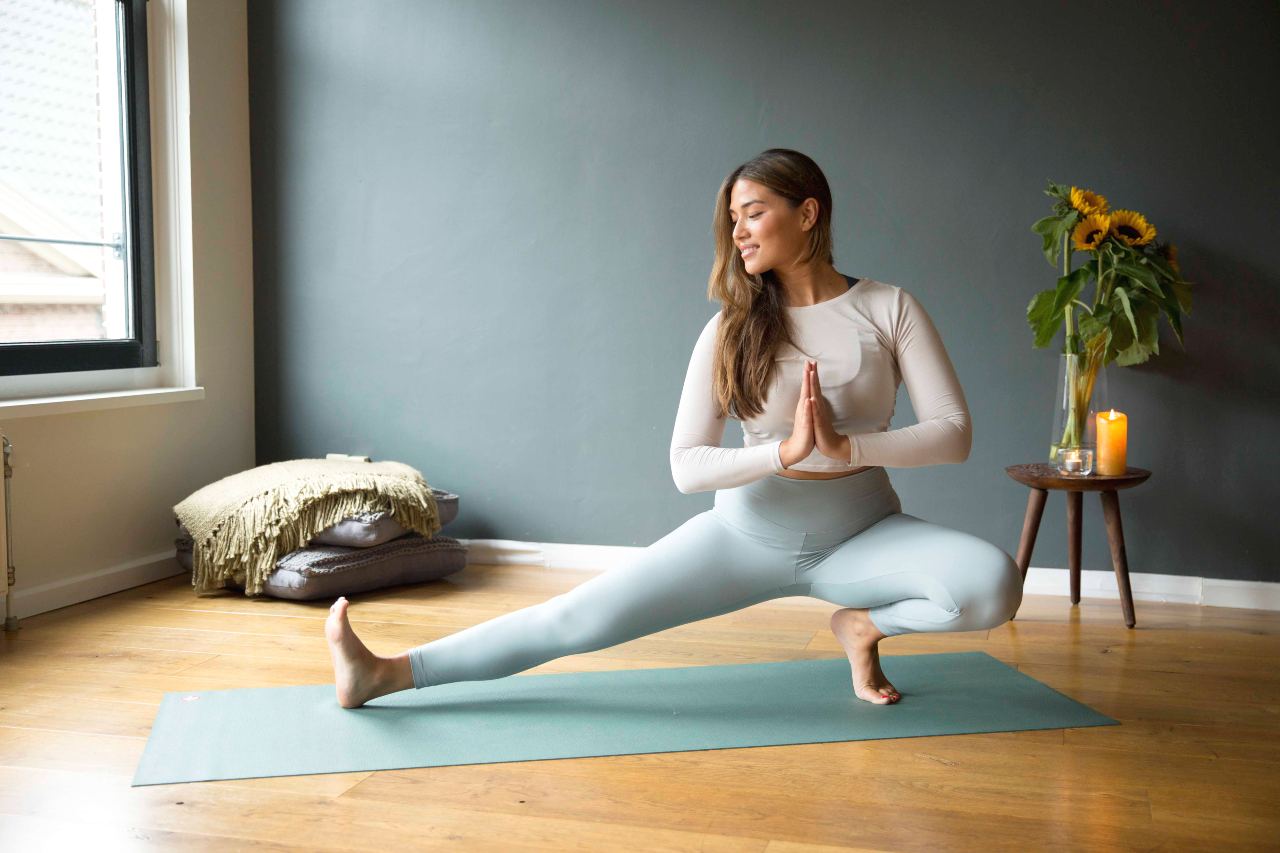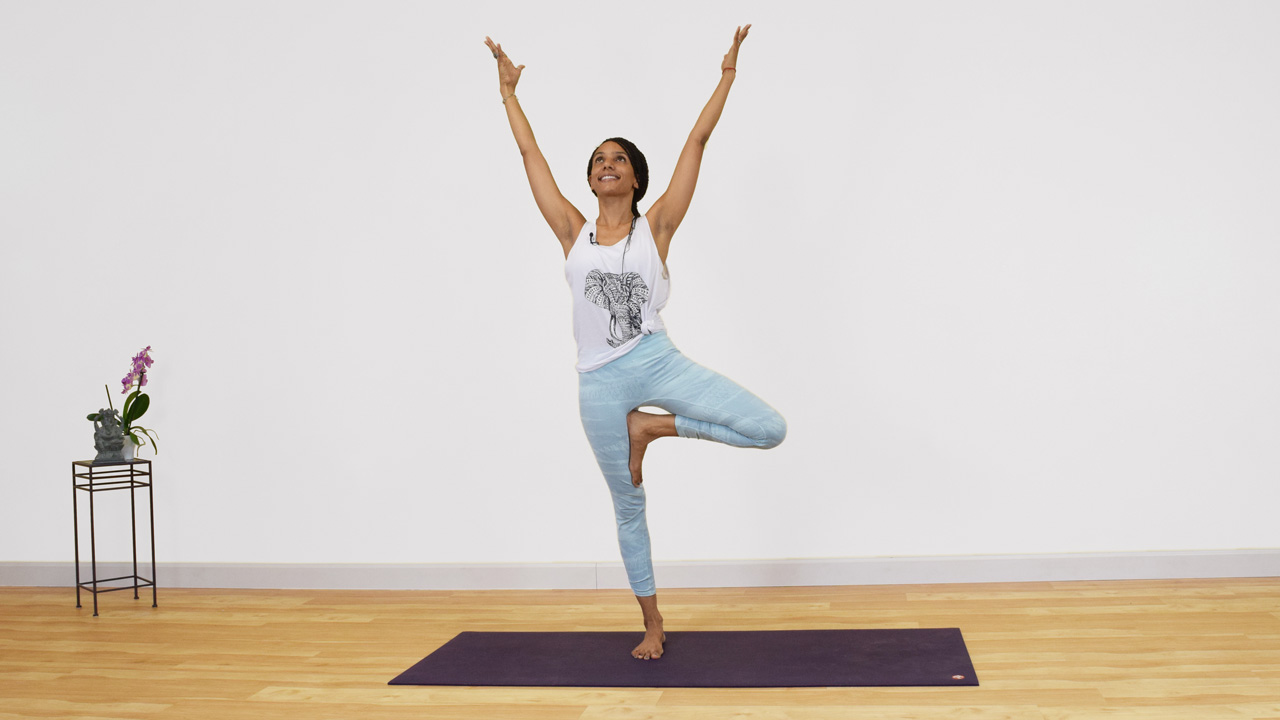When it comes to the practice of yoga and philosophies that come with it, the concept of finding balance is recurring, and boldly relevant.
The very nature of life manifests as the ebb and flow of light versus dark, strength versus weakness, good versus evil. Yet we may often find, through the teachings of yoga and the lessons of life, that harmony lies in the balance. We see it in the Earth and Moon cycles; in the tides of the oceans as they rise and fall. We experience it when there are highs in our lives followed by heartbreaking lows.
There is a latent rhythm to it all.
So how do we find balance?
The concept of Sthira and Sukha in yogic philosophy alludes to exactly that; the polarized yet completely balanced nature of life. These two concepts are found in the Yoga Sutras of Patanjali, a collection of 196 Sutras (aphorisms) on the theory and practice of yoga.
The sutra that refers to these terms is sutra 2.46 – “sthira-sukham asanam”. This sentence can be roughly translated as “postures should be stable and comfortable”, and it is also often reworded as the balance between “effort” and “ease.”
- Sthira refers to stability, intent, and strength. Etymologically it arises from the root stha, which means “to stand, to be firm”.
- Sukha refers to comfort, ease, and openness, and the literal meaning is “good space,” from the root words su (good) and kha (space).
Effort and ease on your mat
Sthira is the fire; the part of the practice that requires you to be fully present when you enter experiences of discomfort, whether it emerges from the physical body, the mind, or the energetic body. Finding stability in the body and the mind while practicing asana, meditation, or any other yogic practice is what can ultimately bring us to balance. “Asana sthiti”, the steadfastness in the posture.
You’ll know you’re experiencing asana sthiti when the shape is steady, your muscles are engaged and your breath is rhythmic and supportive of the moment unfolding before you. Your mind will be present and observant.
Sukha occurs when we learn to let go. It’s the part of the practice where, as we become more and more familiar with ourselves, we begin to relax and become more present in the experience without the need to do more or try harder; the law of minimum effort manifested. It is that part of ourselves that truly knows when we’ve “arrived” in the posture. Everything feels aligned and there is no strain in the muscles. The mind feels calm, content and spacious, and prana, the life force energy, can flow freely through us.
On our mat and in our lives we’re constantly in search of harmony between both strength and stability, as well as flexibility and freedom. Having too much of one and too little of the other creates imbalance.
If your body is strong yet your muscles and other connective tissues are not flexible, you may be able to do certain poses like Chaturanga Dandasana with a great amount of ease. Yet opening up through your front body in Bhujangasana may be very challenging; as may sitting in Sukhasana to meditate with ease. Freedom and spaciousness become elusive.
If on the other hand, your practice is centered around achieving flexibility, predominance of flowing movements over controlled and sustained shapes, you may become flexible and pliable, yet struggle to hold postures for a long time. You may enter certain shapes lacking the muscle awareness and activation necessary to be in them safely.
How do you find the balance?
Isn’t that the ultimate question? How do we find the balance on our mat between doing too much and straining, and doing too little and feeling like we’re “not trying” hard enough? The answer: Sthira and Sukha. Entering the pose with intention, activating the required muscles, readjusting to find safe alignment. And, once there, finding our breath, comfort, and the present moment. One inhale and one exhale at a time, ebbing and flowing.
How do we move in our lives in a stable way, where both work and play are equal? Where time for ourselves is proportionate to the time we spend doing things for others? In the exact same way as we explore this duality on our yoga mat; with awareness and intent for balance.
The mind enjoys this game of extremes; all in… or all out. Either you are great or you totally suck. It is trained to keep you engaged, if you allow it, in trivial things; overthinking that one embarrassing moment you had last week, reliving it over and over. Or perhaps worrying about tomorrow’s presentation with thoughts of doom, defeat, and worst-case scenarios.
Come back to the present, where life truly happens.
The nature of life
It lies in the balance, in remembering the dual nature of life, the continuous swings of the pendulum from one side to the other, and our ability to flow with it with enough awareness and mindfulness to recognize the moments in between.
Through mindfulness practices, as you become more aware of how you show up on your mat and in your life, you may start to understand yourself and your patterns a bit better as well; How You Do Anything is How You Do Everything.
Perhaps your natural tendency in life is Sthira; always going, working harder, making things perfect, busy, active, and stressed. If that’s the case, utilise your practice to create balance; leaning more toward grounding, relaxing practices like Restorative or Yin Yoga, meditation, and pranayama exercises to support and increase Sukha, ease.
Maybe you inhabit the realm of Sukha more often in your life; you are adaptable and go with the flow, always ready for whatever is coming. You may find it hard to get tasks done at times. To bring yourself to balance through your yoga practice, consider more heat-building and strengthening practices like Vinyasa Flow, Power Yoga, or even Ashtanga, a regimented practice that will surely bring more strength and more structure into your life.
The swinging pendulum
No matter which end of the pendulum you’re swinging on at the moment, remember that it is that: a pendulum. And that aspiring to find balance will require change and intention – whether it’s to bring more effort or more ease into your life.
Doing the opposite of what is natural to us can bring about discomfort, resistance, and even anger. Yet the reward of finding a more balanced and fulfilling life on the other side is well worth it. As you learn to listen to yourself on your mat, you will learn to listen to yourself off the mat. There are times in our lives where we have no choice but to put in effort, work hard, push forward. There are times where life will force us to rest, let go, and pause.
Exploring each posture and finding where the balance between too much and too little lies, is a practice in itself. Breathing and being present through it all. Learning to be in spaces with grace and compassion. Ebbing and flowing with it all, and weaving Sthira and Sukha into every situation will enhance our experience of life, making space for more understanding of who we are.
Practice in class: From roots to leaves – Balancing Trees
This practice is centered around Vrksasana – Tree pose. It’s a great reminder to bring a combination of strength and gentleness into our practice and into our lives. This class begins at a slower pace to give you time to open up. It builds to a peak of challenge in the middle, to allow plenty of time to come back down and relax and release.


